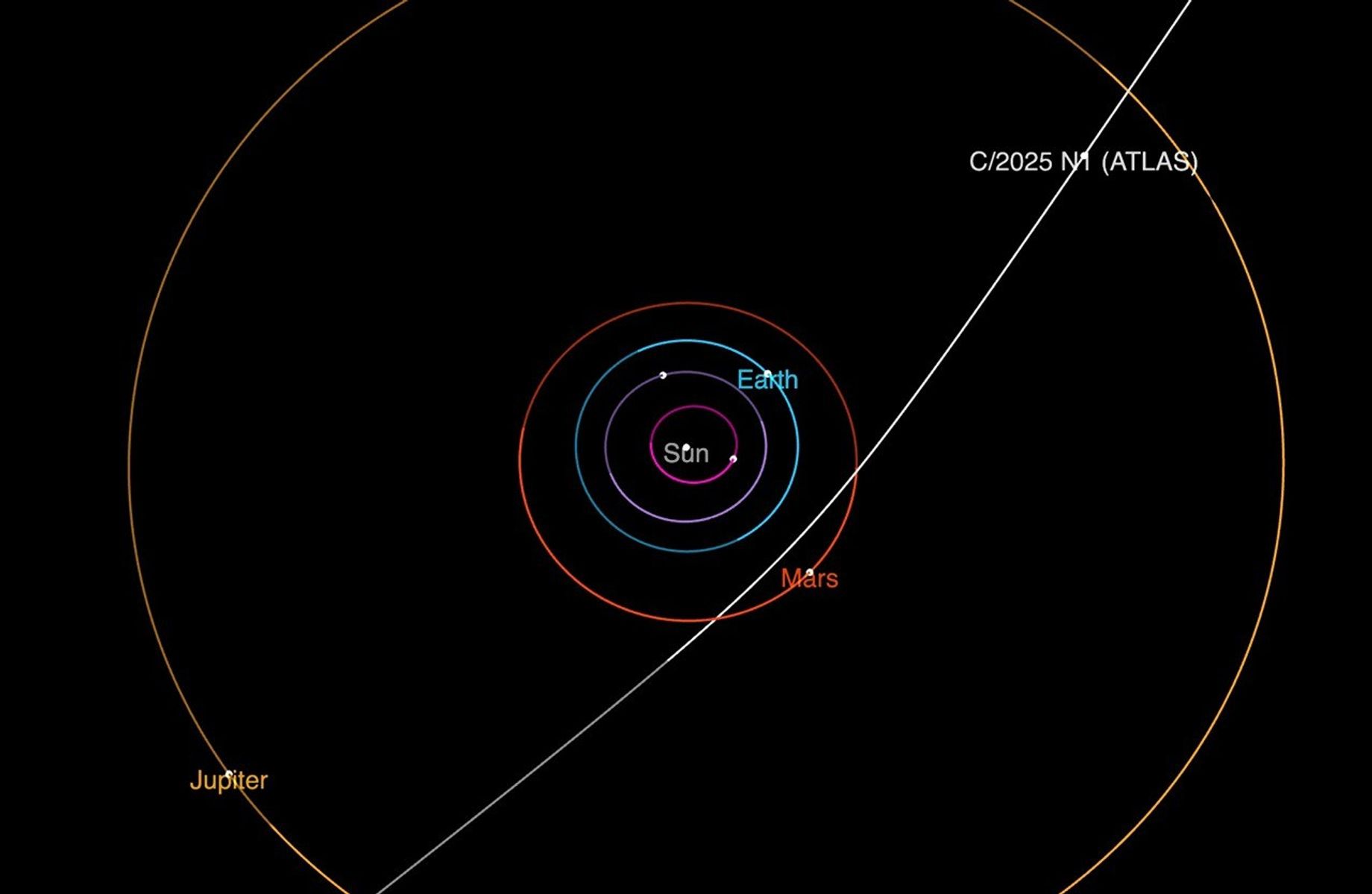Interstellar comet 3I/ATLAS appears to be the oldest ever observed, scientists say.

A surprising interstellar object discovered last week, dubbed 3I/ATLAS, may be the oldest comet ever observed , possibly predating the solar system by more than 3 billion years, researchers have announced.
The comet is the third known object from outside the Solar System to be sighted in Earth's "cosmic neighborhood" and the first to arrive from a region completely different from our own Milky Way galaxy.
Seven billion years According to Oxford University astronomer Matthew Hopkins , it could be more than 7 billion years old and be the "most significant interstellar discovery to date."
Unlike the previous two objects, which entered the Solar System from elsewhere in the cosmos, 3I/ATLAS appears to be traveling on a steep trajectory through the Galaxy, suggesting it originated in the Milky Way's thick disk , a population of ancient stars orbiting above and below the thin plane where the Sun and most stars reside.
"All non-interstellar comets, like Halley's, formed with the Solar System, so they're up to 4.5 billion years old," explained Hopkins, who is presenting her findings this week at the Royal Astronomical Society's 2025 National Astronomy Meeting in Durham and made this discovery just after submitting her thesis.
"Interstellar objects can be much older, and of those known so far, 3I/ATLAS is very likely the oldest comet we've ever seen," he added in a statement.
The object was first spotted on July 1, 2025, by the ATLAS survey telescope in Chile, when it was about 670 million kilometers from the Sun.

3I/Atlas Photo: NASA
Hopkins' research indicates that since 3I/ATLAS likely formed around an ancient thick-disk star, it should be rich in water ice .
"This is an object from a part of the galaxy we've never seen up close before. We think there's a 66% chance this comet is older than the Solar System and has been wandering through interstellar space ever since," said one of the authors, Chris Lintott, presenter of the BBC's The Sky at Night program.
As it approaches the Sun, sunlight will heat the surface of 3I/ATLAS and trigger cometary activity , the release of vapor and dust that creates a bright coma and tail.
Early observations already suggest that the comet is active and possibly larger than either of its interstellar predecessors, 1I/'Oumuamua (sighted in 2017) and 2I/Borisov (2019) .
If confirmed, it will provide scientists with clues about the role ancient interstellar comets play in the formation of stars and planets throughout the galaxy.
Surprise discovery The discovery of 3I came almost by surprise as researchers were preparing to begin survey operations with the Vera C. Rubin Observatory , which will conduct an unprecedented decade-long survey of the optical sky called the Space-Time Legacy Survey .
Researchers believe it has the potential to discover between 5 and 50 interstellar objects. "The discovery of 3I suggests that the outlook for Rubin may now be more optimistic; we may find around 50 objects, some of which would be similar in size to 3I. This week's news, especially following the first images of Rubin, makes the start of observations even more exciting," said Rosemary Dorsey of the University of Helsinki, another researcher.
The team's findings come from the application of a model, called Otautahi-Oxford, developed during Hopkins' doctoral research, which simulates the properties of interstellar objects based on their orbits and possible stellar origins.
The new comet 3I/ATLAS will be visible through a reasonably sized amateur telescope in late 2025 and early 2026.
eltiempo





